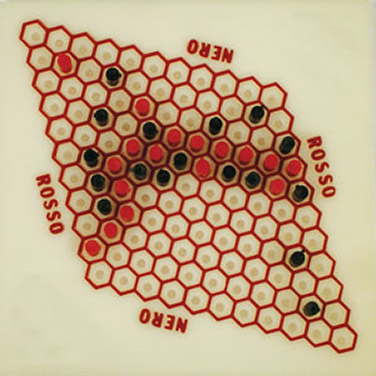Hex

Hex is usually played on a board with 11x11 hexagons. Two facing edges belong to one player, the remaining two to the opponent; the corners belong to both players. Each player can place their coloured pieces in vacant spaces. The aim of the game is to form a path connecting the two sides.
History
The game was invented by the Danish scientist and author Piet Hein in 1942. He called it Polygon. Independently, John Nash invented the same game in 1948 while at University in Princeton.
It was launched on the market as Hex in 1952. It was also a popular pen-and-paper game in newspapers. The actual breakthrough, however, came in 1957 when Martin Gardner did a feature on the game in his column in "Scientific American".
Mathematics
As a maximum of 121 moves are possible, the game always has an outcome. It cannot end in a draw as only the formation of a path can block the opponent's path. In 1979 David Gale proved that this fact is linked to Brouwer's fixed-point theorem.
In 1949 John Nash proved that there is a winning strategy for the first player. His argument is referred to as "strategy-stealing". Winning strategies are known for every initial situation up to 9x9. For boards with 10x10 fields, winning strategies are only known for certain initial situations. According to present knowledge, it can be assumed that for the development of algorithms for bigger boards a big development with regards to the performance of computers is necessary.